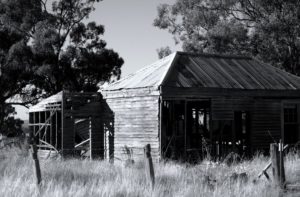Gold tinsel and Central Park……
We took down the Christmas tree on New Year’s Eve. Not the seven-foot version – that one remained wrapped in the tarpaulins and hanging from the garage ceiling. This was the 90 centimeter on the table with the gifts scattered on the floor model. Pro rata it probably had the same intensity of decorations. But this year, it was the intergenerational model, the one that bridges the time when your own children are no longer as excited by the Christmas rituals and the next generation which is still more excited by tearing paper than the presents.
It was down before the bells tolled at midnight to avoid dragging all your baggage and bad luck from one year into the next. The traditionalist get to take their Christmas tree down on the Twelfth Day (January 5) and the religious take their tree down on January 6 in observance of Epiphany.
Christmas is all about perspective and memories. Christmas at Beazley’s Bridge was marked by weather. It came in hot still summers, where the winds sucked up all moisture, the grass was burnt silver-grey and the wheat harvesting season was in full swing when the chain of trucks hauling the wheat to the silos gradually reduced, and the drivers, with their arms burnt deep brown from resting on the windows, were looking at a bit of time off .
The old man would often take a job driving when the shearing season was at an end, and spend endless parts of the day in a queue waiting to load or unload – giving plenty of time for a yarn and a smoke, the traditional communications that defined their world. Christmas provided a break from the five-day a week bus trip to and from the school.
School provided the daily socialisation. Without that, there was no contact.The start of the school holidays marked the start of ten weeks of isolation, imagination and dreams. Still,Christmas was marked with the appearance of comforting decorations that existed for a brief time; special foods marked that special time and the use of the “good crockery” that was pulled from its hiding place. Good crockery, like good clothes, was something to be valued and used with discretion –kept for visitors and special occasions.
Santa would pop down to the local hall, on the back of the CFA fire truck, spreading good cheer for the local kids, while the men cracked a keg at the back and talked of harvests, wheat tonnage and weather reports; and the women worked in the kitchen making supper. We kids ran around in the hot night, still blessed with energy levels that knew no bounds. It was an attempt to bring together the locals in some sort of community celebration, to mark the end of what for many, were tough years.

There were faded German glass decorations, plastic versions of Santa, and the centre piece, a gold tinsel Christmas tree, popular in the sixties, which took its place in the corner of the lounge room. It’s tinsel shone brightly in the summer sun. It was hauled out each year, and each year looking a little more tired. You would become accustomed to its presence, until one day it just wasn’t there and would remain in its hiding place for another 12 months. There were licorice all sorts in the Royal Winton chintz bowl; homemade plum puddings with real sixpences, mum’s custard and the pure fresh cream; homemade fruit cake; Rolf Harris – before we knew of otherwise – belting out six white boomers and of course, the iconic Chips Rafferty in the flickering black and white movie, Bush Christmas.
There are many memories of Christmas, driven by those from the depression generation whose own Christmas days had been sparse, the generation who had watched their parents battle, saw Christmas as the chance to make up for the sparcity of their own time. Christmas seemed so much more important than now.
Decades later, we spent a cold Christmas day wandering the streets of New York, watching the skating at central park and then having lunch at the Marriott Marquis hovering 48 stories above New York City. But despite its location and the sea of dinner suits, there was no gold christmas tree and no licorice all sorts. There were no sixpences to find in the Christmas pudding and somehow, the brandy sauce didn’t taste anywhere near as good as the custard mum used to make. The snow had turned a sludge brown and the begging homeless were squatting over the warm air vents. There were always problems when you mix heat and booze in an emotionally charged cauldron such as a family at Christmas. But it seemed preferable to the cold brutality of New York’s streets.



Comments